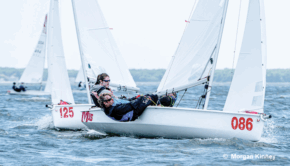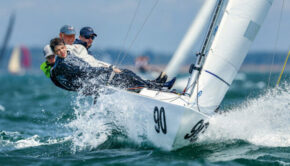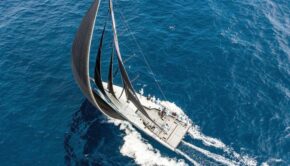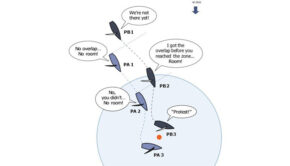Building Blocks of Asymmetric Spin Trim
Published on July 18th, 2024
by Madeline Gill Baldridge, Sailing World
As a sailor who floats among many different classes, I tend to seek out transferable performance patterns. More valuable to me than the ability to memorize a tuning matrix is the understanding of how to interpret the location and prominence of overbend wrinkles in a mainsail, the amount of tension or dangle in the leeward shrouds, or the frequency of stall or flow over the leech telltales.
Utilizing the sail plan’s power and balance cues that will present themselves on any boat is the key to reducing the learning curve in a new fleet and outperforming the tuning guide in an established class.
Once we turn downwind, however, the underlying indicators of net VMG gains are trickier to recognize and isolate, especially in sportboats with asymmetric spinnakers where we are trying to decide when exactly the transitions occur between the fully planing, lazy planing, low displacement, or occasional wing-on-wing modes.
So how do we get down the course successfully in the absence of a mode-crossover bible? Rig tune and sail trim are substantially less nuanced downwind than they are upwind, so a balance of sheet load, helm load, boatspeed, and heel angle can hold the answer. – Full report









 We’ll keep your information safe.
We’ll keep your information safe.